Our Guide to the Ultimate British Cottage Garden
Our Guide to the Ultimate British Cottage Garden
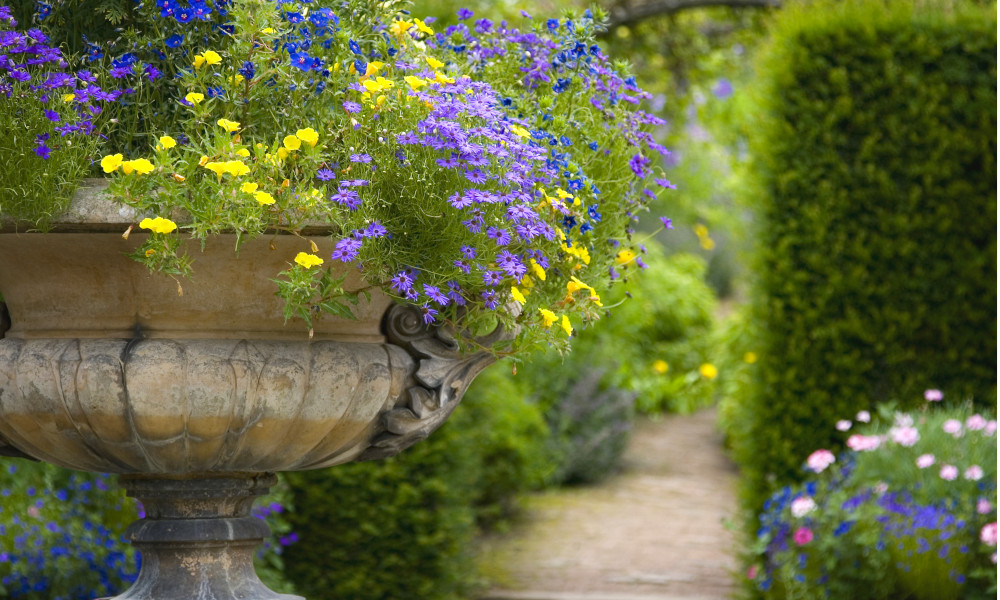
We are all familiar with the billowing froth and whimsy of the cottage garden style but where did it come from, what characterises the style and how can we achieve it? Here is your go to guide!
Cottage Gardens were born from practicality and necessity in medieval times, functioning as a garden within which labourers could grow fruit, vegetables, and herbs to feed, nourish and medicate their families. Some flowers were planted but mainly as a form of pest control. As the labourers were less concerned with aesthetics and had limited time to tend to their plots, the result was a hap hazard mix of form, texture, and height with hardly an inch of soil visible.
Up until the late 1800s this style of gardening had always been very formal and structured and rigorously maintained. However, the charm and apparent ease of the cottage garden proved too appealing and a reinvention of the style took off.
Early advocates of the style include William Robinson (1838-1935), whose writings such as ‘The Wild Garden’ and ‘The English Flower Garden’ spurred to popularise the style. Later, Margery Fish (1892-1969) was hugely influential in the style and her iconic garden at East Lambrook Manor in Somerset, which can still be visited, continues to inspire gardeners today.


But what typifies the Cottage Garden Style?
Quite simply it is the informal arrangement of a selection of perennials, annuals, fruits, herbs, and vegetables planted so densely that not an inch of soil can be seen!
Typical plants would include aquilegias, foxgloves, roses, delphiniums, hollyhocks, salvia, and geraniums to name but a few. The design of such a garden is loose and constantly changing according to the seasons, and of course, the gardener. Any bare spot is soon filled with a new plant and any failing plants quickly replaced.
Colour can be riotous or muted according to taste and can even be a combination of the two. It reflects the taste of the gardener that tends the plot which makes the style very personal and adds to its appeal.
Do not be fooled into thinking this style is low maintenance however – it is now far removed from its medieval roots! This style requires a high level of maintenance and continued care throughout the year with dividing, deadheading, pruning, mulching, watering, and so on and so on. For a passionate gardener however, the reward of the full, heady, aromatic garden buzzing with wildlife far outweighs the continuous attention and care.
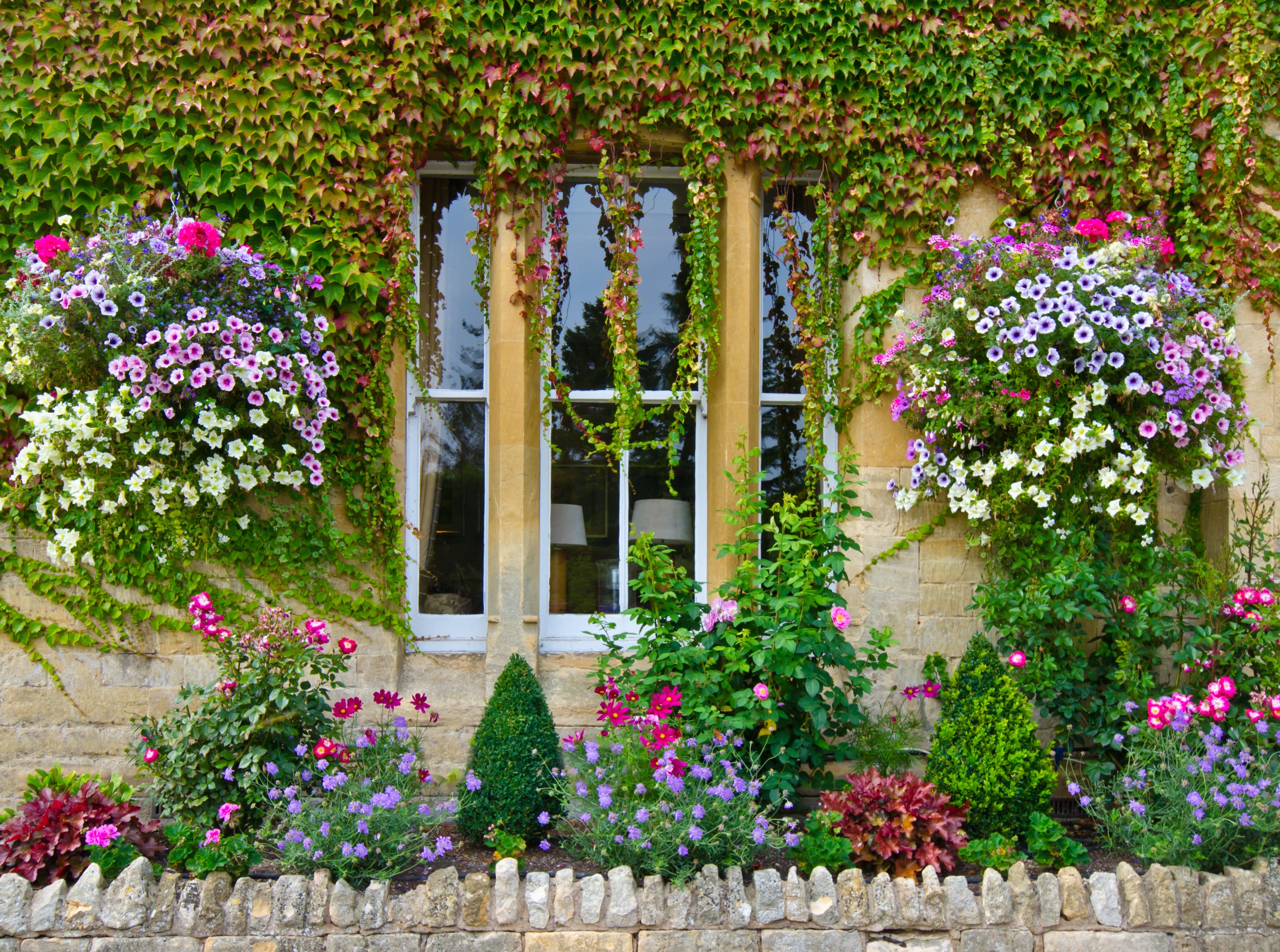
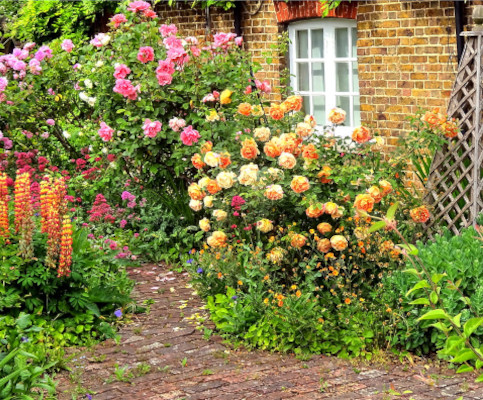
Getting started:
Possibly the hardest part of any project is knowing where to start. It is probably best not to over think it as that is really what the style is all about. Start where you are! Work with your soil – cultivation of a healthy soil is paramount to the success of this style. Consider visiting gardens in your local area to discover what plants work well in your local climate and make notes of those you like. The key is to remember that a good cottage garden is a never-ending labour of love and one which will develop over many seasons.
Key points to consider:
Garden Structure:
Most cottage gardens will have some form of garden structure whether it be in the form of an arch, trellis, or Pergola. You can add a structure of some form to a garden of any size, and this will offer the opportunity to introduce climbers to the garden and therefore some height. Most often Roses are used but options also include annuals – ideal for pots – such as Ipomoea. There is also a wide array of Clematis available that flower at different times of the year. Perfume can be added by choosing a Honeysuckle, Jasmine or Akebia.
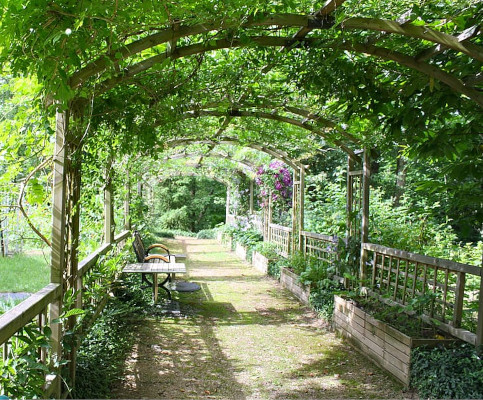
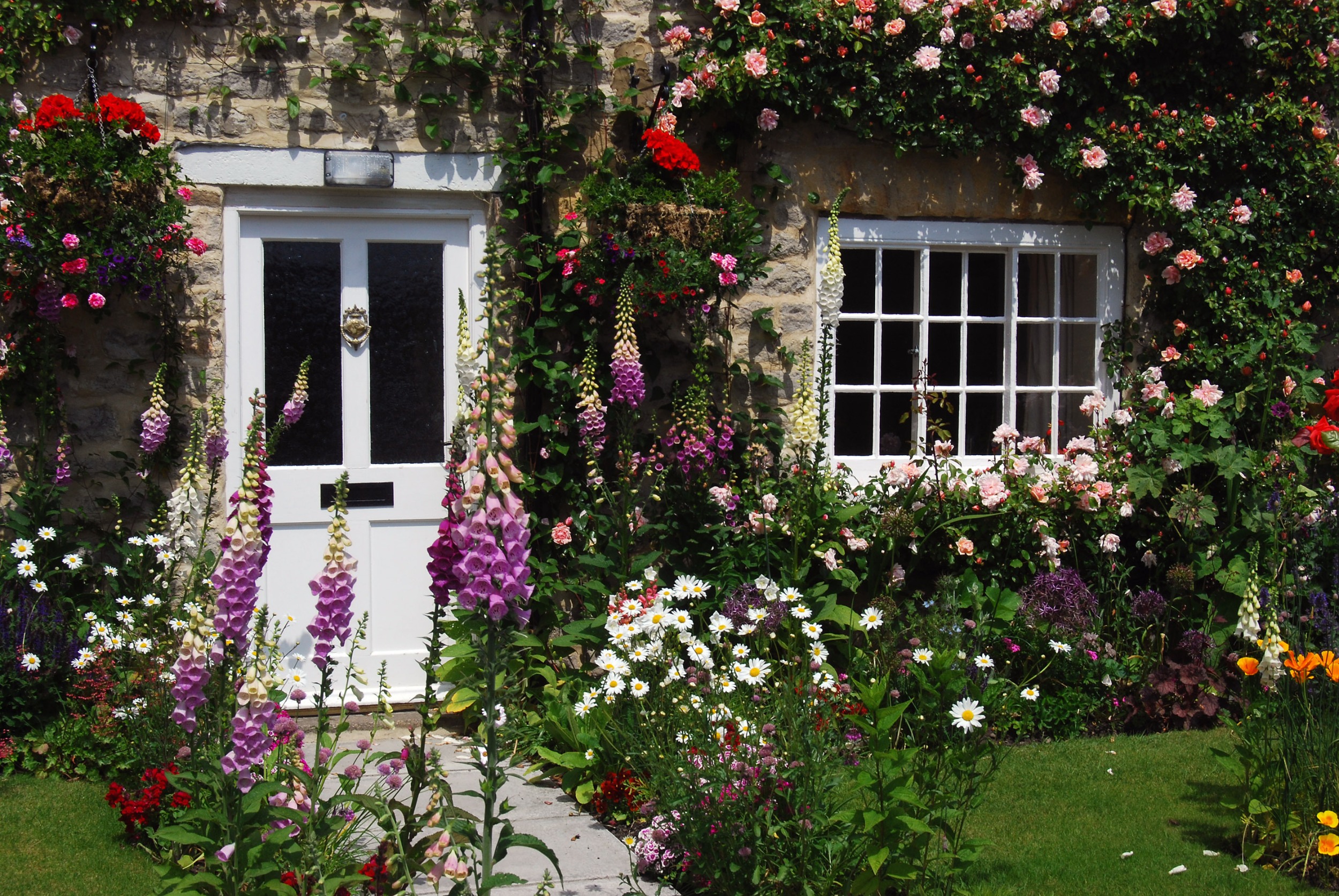
Avoid anything too formal and upcycle:
Avoid any straight lines in both your landscaping design and planting.
Found or reused objects inject some character and diversity to the garden – anything from bird baths, mirrors, bathtubs, picket fencing, chimney pots, to even boats can create an interesting focal point.
Introduce fruit trees and extend the seasons:
Any size garden will be able to incorporate a fruit, from a large apple tree to an espalier pear or blueberry grown in a pot.
Add plants that have varying seasons of interest – so for example, bulbs for earlier in the year and late flowering perennials such as Penstemon and Helenium for autumn colour.
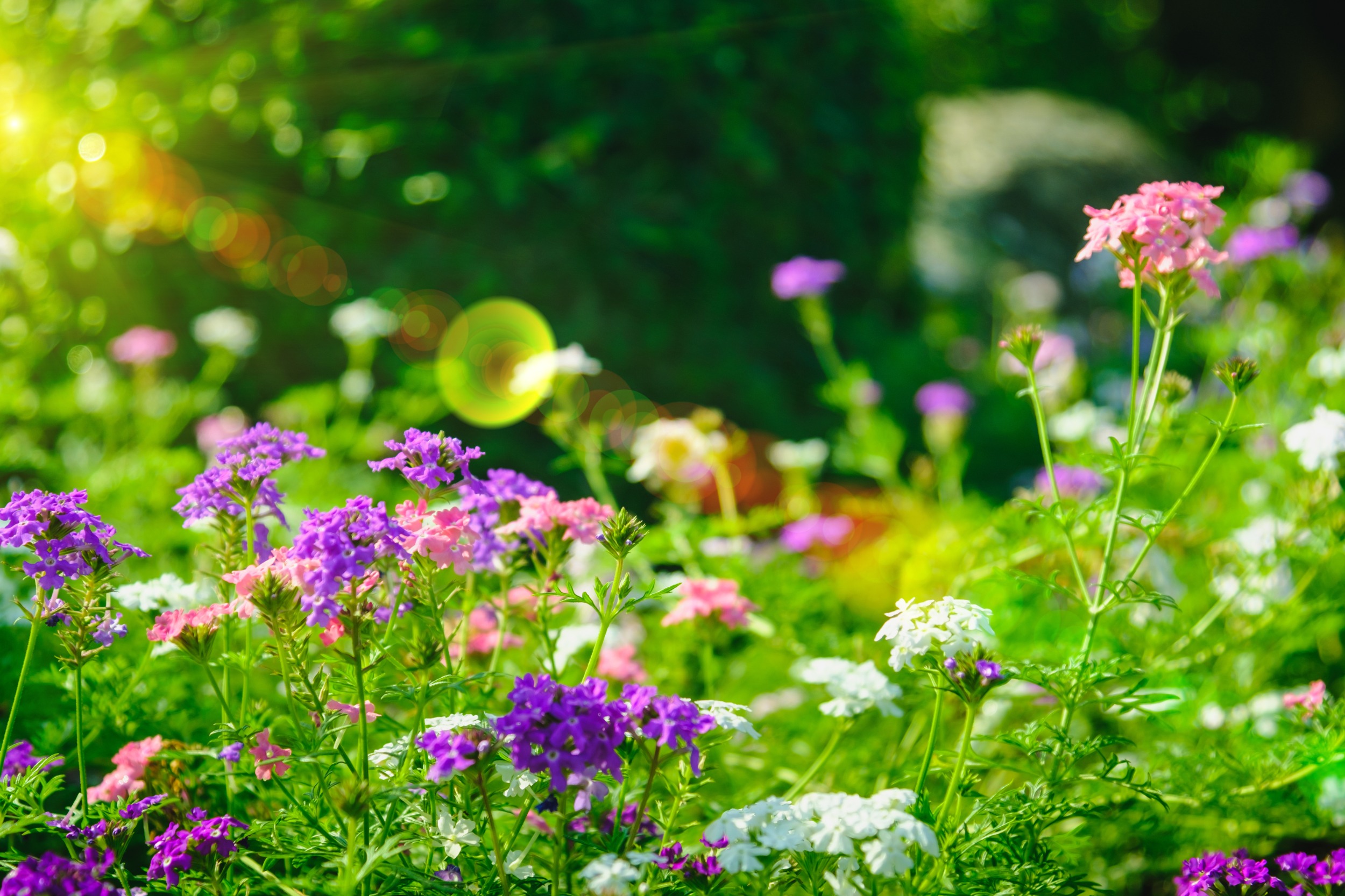
Hard Landscape Materials:
Choose something that suits the age of your home. Paths for example can be gravel, stone, paving or brick. Something that looks natural in its setting is always best.
Keep a notebook:
As much as we all think we can remember everything it is especially useful to jot down any elements of the garden that will need adjusting. This can be an unruly plant that needs dividing in the spring or added support for a climber that that got bigger than expected.
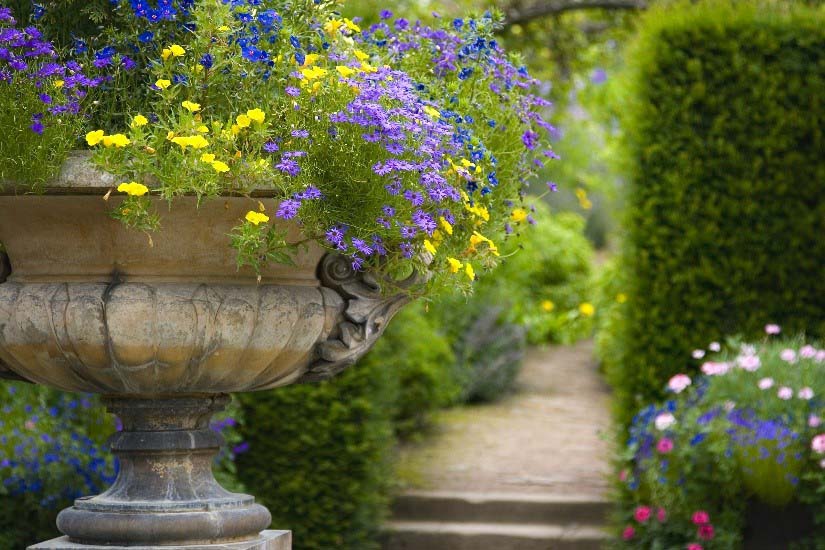
Plants should be allowed to spill over in the border and over paths and boundaries during the growing season. It is in spring that the gardener can make any adjustments that were not successful from the previous year.
Choose plants that you like! Your selection should vary in height and structure as well as colour and texture. Choose plants with big blousy flowers and some with small delicate flowers. Choose some use foliage is the starring quality and some that remain evergreen to give all round interest. Build your confidence by choosing Award of Garden Merit plants that are recommended for their reliability.





